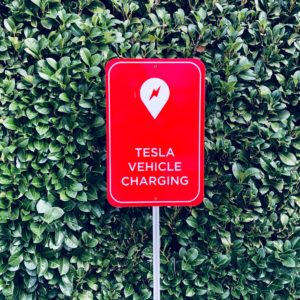
Types of EV Chargers
It might come as a surprise to learn that the term ‘EV chargers’ could mean different things. Well, don’t fret. Take comfort knowing that a lot of drivers have no idea too.
An EV charger can either refer to the On-board charger in the car (OBC) or the external charger known mostly as Electric Vehicle Supply Equipment (EVSE).
Charging Levels
You can charge your Tesla vehicle using either a Level 1, 2, or 3 charges.
Level 1 charging is also recognized as a 120V charge. It involves plugging into a 120V outlet in the home or public place. Using a level 1 charge is a convenient option because such circuits are everywhere, but it is not the best choice. It takes four days to achieve a full battery with a level 1 charge which also means you must charge overnight to get enough power to run for up to 30 miles. Most people call this trickle charging and it is really cheap as no money needs to be spent on installation.
Level 2 charging or 240V charging is the most popular and efficient solution for Tesla drivers. It beats a level 1 charge in speed and convenience but requires a minimal financial investment in the installation of the 240V outlet. Level 2 charge is best suited for the home and it takes between 6-30 hours to achieve a full Tesla battery. Hence, you can arrive home on a low charge, knowing you will drive out with a full charge in the morning.
Level 3 charging refers to Tesla Superchargers. On one hand, this is everything a Tesla driver could wish for, while on the other it is not as flexible as you would like. Tesla superchargers can take your vehicle from zero to a full charge in almost one hour. For anyone, this is the ultimate deal, but you can’t have a supercharger at home. Tesla superchargers are available to the public en route to various destinations. The locations of the supercharging public outlets are set up in the Supercharger map, which is built into the Tesla navigation system on the vehicle’s touch screen control panel.
Now, it’s not far-fetched to wonder why you can’t have a supercharger at home. The reason there are no home superchargers is that you simply can’t support the large amount of electrical power needed for it to work.
Free supercharging is now limited as you can only supercharge for free within the first 1000 miles.
Wireless Tesla Charging
A Plug-in charging method is useful, but when you are obsessed with convenience, wireless Tesla charging can be a lifesaver. The plugless charging upgrade with Tesla works when you park the vehicle over a wireless charging pad.
Tesla Charger Installation
If you need an EV charger installed in your home or place of business, just give Elcon Electric a call. We are experienced EV charger installers with over 20 years of electrical experience. Our goal is to make the process quick and painless to get your car charging as soon as possible.

